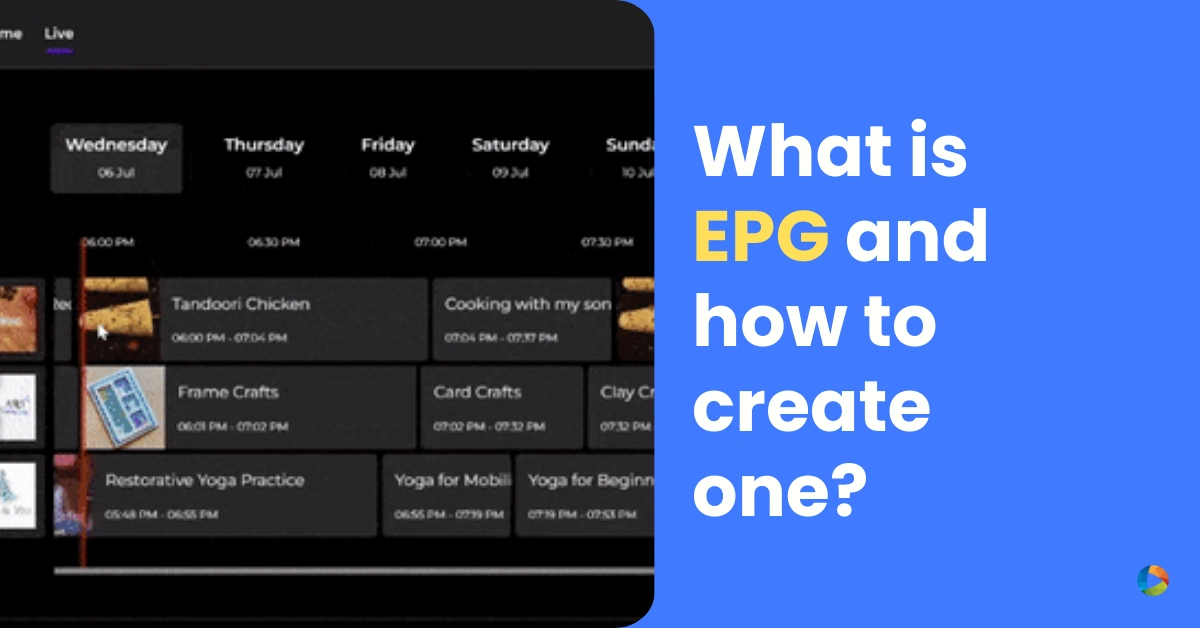3 ways to add videos to your software
Last Updated on May 29, 2025 by Anjana Devi
Video is everywhere around us: commercials, tutorials, demo videos, how-to, explainer videos, etc. It is becoming an inevitable component of the business.
There are so many scenarios where you might want to add videos to your solution. You might be launching a competitor app for Facebook/ Instagram, you might have a hiring solution where applicants send a video resume, or you might have a sales product that helps salespeople reach out to prospects through videos.
All these solutions have one thing in common — they have videos.
Let’s explore what it takes to include videos in your software.
Table of Contents :
1. Video – > Online Video : Complex
2. What are the options available
‘Video’ -> ‘Online video’ : Complex
Making your videos ready for online distribution from a raw video on your camera or post-production app is not trivial.
Why not? isn’t video a static asset similar to image, js, CSS files? Can’t we upload and serve from any servers online?
Technically yes! But due to the nature of video data (its size and representation), we need to optimally pack and send it to different consumer devices. These devices have a wide spectrum of capabilities in playing video, storage, and network bandwidth. All of them have to be considered for a good user experience.
With OTT getting more and more popular, the devices consuming online videos are growing from desktop to mobile to various TV platforms. It is very common to see video content with different qualities such as 270p, 360p, 480p, 540p, 720p, 1080p, etc being served these days.
Also, the security of the content cannot be overlooked (like the leak of confidential video or video piracy).
Having said that, let me list the components needed in this process and explain why the whole process is complex.
Minimum things needed to make videos online:
- Video encoding system (for optimal packing of videos for various devices)
- Management of content in servers and CDN Network
- Processing for secure delivery
Item 1 needs video experts to come-up with appropriate encoding schemes for various devices per business need. Items 2 and 3 need a dedicated team with appropriate expertise to make sure the video content is delivered and the playback is smooth.
TL;DR: You need a dedicated team of video, content delivery, and security experts to make sure you stream videos online without any impact in performance.
What are the options available?
You have three options if you want to outsource the video complexity to experts:
- Consumer-focused video platforms: Popular platforms like YouTube, Twitch, Facebook, Instagram provide a CMS to add and manage your video content. These free platforms are great for individuals and small businesses who don’t have a lot of videos and don’t bother about carrying the branding of these platforms.
- Online video platforms: We have a range of systems (like Ventuno, Wowza, Vimeo, Brightcove, Kaltura), which provide a fixed CMS kind of interface to add and manage your video content along with customizable players. It is great for businesses, who have a lot of videos and are interested in own-branding.
- Video APIs: There is another set of systems (like Ventuno, Mux), that give extreme flexibility to build your own UI/UX for playback supported by a strong delivery mechanism. If you want to build the next Facebook, Instagram, or a business concerned with branding and more control, then this one is for you.
Your options | Pros | Cons |
Consumer-focused video platforms | Easy to integrate | Monetization: Ads only Cannot bring your own ads No control over branding |
Online video platforms | Monetization: AVOD, SVOD, TVOD | Less control over UI (can customize only to an extent) |
Video APIs | Monetization: AVOD, SVOD, TVOD Full control over UI | Need to build UI on your own |
Conclusion
Video is here to stay. People are consuming more and more videos every day. It makes sense for platforms to add a video to their solution.
You might want to launch the next Facebook or collect feedback from users via videos in your app. Whatever the use case, you can use Video APIs to add videos to your solution.
Ventuno provides APIs to add fully flexible video experiences to your solutions.
What are your thoughts on this article? reach out to us at info@ventunotech.com if you would like to discuss!
Looking to launch your streaming app?







